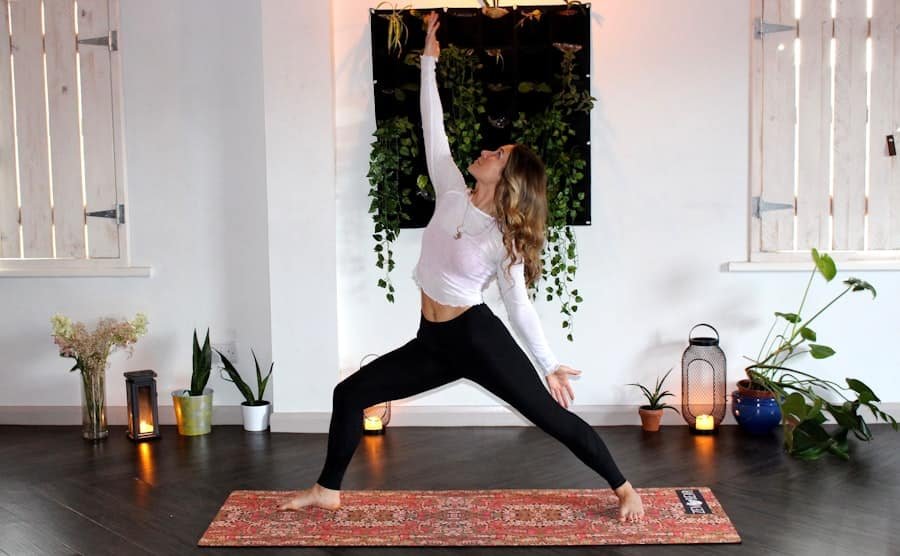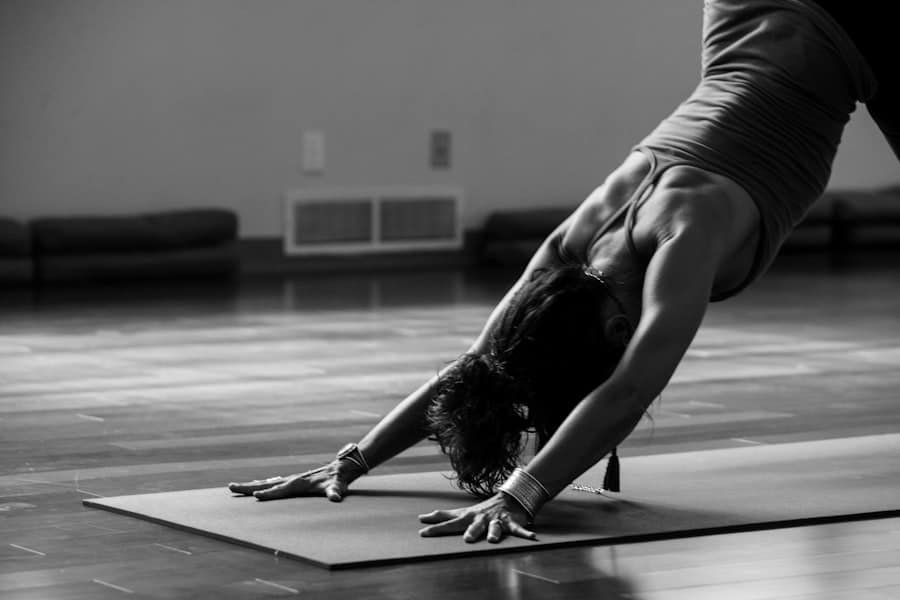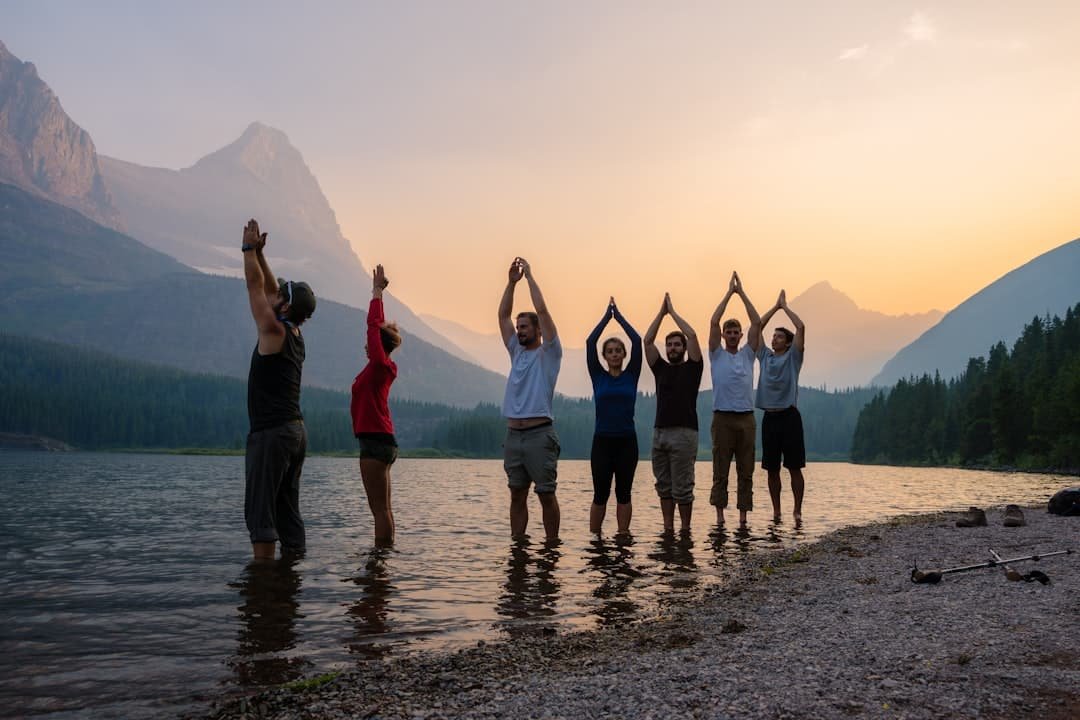This post may contain affiliate links. When you purchase through links on our site, we may earn an affiliate commission.
When I think about the purpose of a wellness retreat, I realize it goes far beyond just a temporary escape from daily life. A wellness retreat is a sanctuary where individuals can reconnect with themselves, rejuvenate their spirits, and cultivate a deeper understanding of their physical and mental well-being. It serves as a space for reflection, healing, and personal growth.
In our fast-paced world, I often find that we neglect our own needs, leading to stress and burnout. A wellness retreat offers an opportunity to step back, breathe, and focus on self-care. Moreover, the essence of a wellness retreat lies in its holistic approach to health.
It encompasses not only physical fitness but also mental clarity and emotional balance. I have come to appreciate that these retreats often incorporate various practices such as yoga, meditation, and mindfulness, which help participants explore their inner selves. By engaging in these activities, I can cultivate a sense of peace and well-being that extends beyond the retreat itself.
Ultimately, the purpose of a wellness retreat is to empower individuals to take charge of their health and happiness, equipping them with tools and insights that they can carry into their everyday lives.
Key Takeaways
- The purpose of a wellness retreat is to provide a space for individuals to relax, rejuvenate, and focus on their physical, mental, and emotional well-being.
- When choosing a location for a wellness retreat, consider factors such as accessibility, natural surroundings, and the overall atmosphere that will contribute to a peaceful and healing experience for participants.
- Planning the schedule and activities for a wellness retreat should involve a balance of relaxation, physical activity, mindfulness practices, and opportunities for personal growth and reflection.
- Select accommodations for a wellness retreat that are comfortable, clean, and in line with the overall atmosphere and goals of the retreat.
- Creating a nourishing menu for a wellness retreat involves offering healthy and delicious meals that cater to various dietary preferences and restrictions, while also supporting the overall wellness goals of the retreat.
- Hiring the right instructors and practitioners for a wellness retreat involves finding individuals who are experienced, knowledgeable, and aligned with the values and focus of the retreat.
- Marketing and promoting a wellness retreat should involve clear communication of the retreat’s purpose, benefits, and unique offerings to attract the right participants.
- Managing logistics and finances for a wellness retreat requires careful planning, budgeting, and attention to details such as transportation, accommodations, activities, and other expenses.
Choosing the Right Location for Your Wellness Retreat
Natural Surroundings and Connection with Nature
When considering potential locations, I think about how the natural surroundings can enhance the participants’ experience and promote a sense of connection with nature. A serene beachside setting can evoke feelings of tranquility and relaxation, while a mountain retreat may inspire adventure and exploration.
Accessibility and Convenience
Accessibility is another crucial factor in choosing a location. I want to ensure that my retreat is easy for participants to reach without causing undue stress or inconvenience. This means considering proximity to airports or major transportation hubs, as well as the availability of local amenities.
Cultural Significance and Immersive Experiences
I also reflect on the cultural aspects of the location. A place rich in history or local traditions can add depth to the retreat experience, allowing participants to immerse themselves in new perspectives and practices. Ultimately, I strive to find a location that resonates with the theme of the retreat while providing a safe and nurturing environment for all attendees.
Planning the Schedule and Activities for Your Wellness Retreat

Crafting a well-balanced schedule for a wellness retreat is an art form in itself. I believe that striking the right balance between structured activities and free time is essential for fostering relaxation and personal exploration. When planning the itinerary, I often consider incorporating a mix of physical activities like yoga or hiking, alongside more introspective practices such as journaling or guided meditation.
This variety allows participants to engage with different aspects of their well-being while catering to diverse preferences. In addition to physical and mental activities, I also think about including opportunities for social connection. Group discussions or sharing circles can create a sense of community among participants, fostering deeper connections and shared experiences.
I find that these moments of vulnerability can lead to profound insights and healing. Furthermore, I make sure to leave ample free time in the schedule for participants to unwind, reflect, or simply enjoy the beauty of their surroundings. By thoughtfully planning the schedule, I aim to create an enriching experience that nurtures both individual growth and collective bonding.
Selecting the Best Accommodations for Your Wellness Retreat
| Accommodation Type | Features | Price Range | Distance from Retreat Location |
|---|---|---|---|
| Hotel | Private rooms, room service, gym, spa | – | 0.5 – 1 mile |
| Resort | Luxury amenities, pool, beach access, wellness programs | – | 1 – 5 miles |
| Villa | Private accommodations, kitchen, outdoor space | – | 1 – 10 miles |
The choice of accommodations can significantly impact the overall experience of a wellness retreat. I often prioritize spaces that promote comfort and relaxation while aligning with the retreat’s theme. For instance, I might opt for eco-friendly lodges or boutique hotels that emphasize sustainability and mindfulness.
The ambiance of the accommodations should evoke a sense of peace and tranquility, allowing participants to feel at home during their stay. In addition to aesthetics, I also consider practical aspects such as amenities and accessibility. Comfortable sleeping arrangements, communal spaces for group activities, and areas for quiet reflection are all essential components of a successful retreat venue.
I find that having access to outdoor spaces can enhance the experience by allowing participants to connect with nature during their downtime. Ultimately, my goal is to select accommodations that not only meet logistical needs but also contribute to an overall sense of well-being and comfort for all attendees.
Creating a Nourishing Menu for Your Wellness Retreat
Food plays a pivotal role in any wellness retreat, as it nourishes both the body and soul. When curating a menu, I strive to focus on wholesome ingredients that promote health and vitality. I often lean towards plant-based options that are rich in nutrients while also being delicious and satisfying.
By incorporating seasonal produce and local flavors, I can create meals that resonate with the surrounding environment and enhance the overall experience. I also consider dietary restrictions and preferences when planning the menu. It’s important for me to ensure that all participants feel included and catered to during mealtimes.
Offering gluten-free, vegan, or allergen-friendly options allows everyone to enjoy nourishing meals without feeling left out. Additionally, I like to incorporate mindful eating practices into mealtimes, encouraging participants to savor each bite and appreciate the nourishment they are receiving. By creating a thoughtful menu, I aim to foster a sense of community around food while promoting healthy eating habits that participants can carry home with them.
Hiring the Right Instructors and Practitioners for Your Wellness Retreat

Expertise and Authenticity
When selecting individuals to lead workshops or classes, I prioritize those who not only possess expertise in their respective fields but also embody the values of compassion and authenticity. I believe that having instructors who are genuinely passionate about their work can inspire participants and create a transformative experience.
Diversity in Expertise
I also consider diversity in expertise when hiring practitioners. A well-rounded team can offer various perspectives on wellness, from yoga instructors to nutritionists or mindfulness coaches. This diversity allows participants to explore different modalities and find what resonates most with them.
Inclusive Environments
Additionally, I value instructors who are skilled at creating inclusive environments where everyone feels comfortable participating at their own level. By carefully curating a team of dedicated professionals, I aim to provide participants with valuable insights and tools that they can integrate into their daily lives long after the retreat has ended.
Marketing and Promoting Your Wellness Retreat
Effective marketing is essential for attracting participants to my wellness retreat. I often start by identifying my target audience—those who are seeking rejuvenation, personal growth, or simply an escape from their daily routines. Once I have a clear understanding of who I want to reach, I focus on crafting compelling messaging that highlights the unique aspects of my retreat experience.
Social media has become an invaluable tool for promoting retreats in today’s digital age. I utilize platforms like Instagram and Facebook to share captivating visuals and testimonials from past participants. Engaging content such as blog posts or videos can also help convey the essence of my retreat while providing potential attendees with insights into what they can expect.
Additionally, I consider collaborating with influencers or wellness bloggers who align with my vision; their endorsement can significantly expand my reach and credibility within the wellness community.
Managing Logistics and Finances for Your Wellness Retreat
Behind every successful wellness retreat lies careful logistical planning and financial management. I often begin by creating a detailed budget that outlines all anticipated expenses—from venue rental and accommodations to food costs and instructor fees. This financial roadmap helps me stay organized while ensuring that I remain within budget throughout the planning process.
Logistics also encompass practical considerations such as transportation arrangements for participants, scheduling activities efficiently, and ensuring that all necessary supplies are available on-site. I find it helpful to create checklists for each aspect of the retreat—this way, nothing falls through the cracks as the event approaches. By managing logistics effectively, I can focus on creating an enriching experience for participants without being overwhelmed by last-minute details.
In conclusion, organizing a wellness retreat requires careful thoughtfulness across various dimensions—from understanding its purpose to managing logistics effectively. Each element plays a vital role in creating an experience that nurtures personal growth and fosters community among participants. As I embark on this journey of planning retreats, I am continually reminded of the profound impact these experiences can have on individuals seeking balance in their lives.
If you are planning a wellness retreat, you may also be interested in fresh ideas to transform your space for a cozy and inviting atmosphere. Check out this article on room renovation ideas that can help create a relaxing environment for your retreat attendees. Creating a beautiful and festive decor can also enhance the overall experience, so be sure to explore festive decor ideas for every season. And if you find yourself in need of last-minute shopping for supplies or decorations, this ultimate guide to quick finds can help you get everything you need in a pinch.
FAQs
What is a wellness retreat?
A wellness retreat is a structured program or getaway focused on promoting health, relaxation, and overall well-being. It typically includes activities such as yoga, meditation, healthy eating, spa treatments, and outdoor excursions.
What are the benefits of attending a wellness retreat?
Attending a wellness retreat can provide numerous benefits, including stress reduction, improved physical fitness, mental clarity, relaxation, and the opportunity to learn and practice healthy habits.
How do you plan a wellness retreat?
Planning a wellness retreat involves determining the location, setting a budget, selecting activities and workshops, arranging accommodations and meals, and promoting the event to potential participants. It also involves coordinating with instructors, therapists, and other professionals.
What should you consider when choosing a location for a wellness retreat?
When choosing a location for a wellness retreat, it’s important to consider factors such as the natural surroundings, accessibility, accommodations, facilities, and the overall atmosphere. The location should be conducive to relaxation and offer opportunities for outdoor activities.
What types of activities are typically included in a wellness retreat?
Wellness retreats often include a variety of activities such as yoga, meditation, hiking, fitness classes, spa treatments, nutrition workshops, mindfulness practices, and outdoor excursions. The goal is to provide a holistic approach to well-being.
How can you promote a wellness retreat?
Promoting a wellness retreat can be done through various channels such as social media, email marketing, partnerships with wellness influencers or organizations, creating a website or landing page, and utilizing word-of-mouth referrals. It’s important to highlight the unique aspects and benefits of the retreat.

 using WordPress and
using WordPress and 
No responses yet